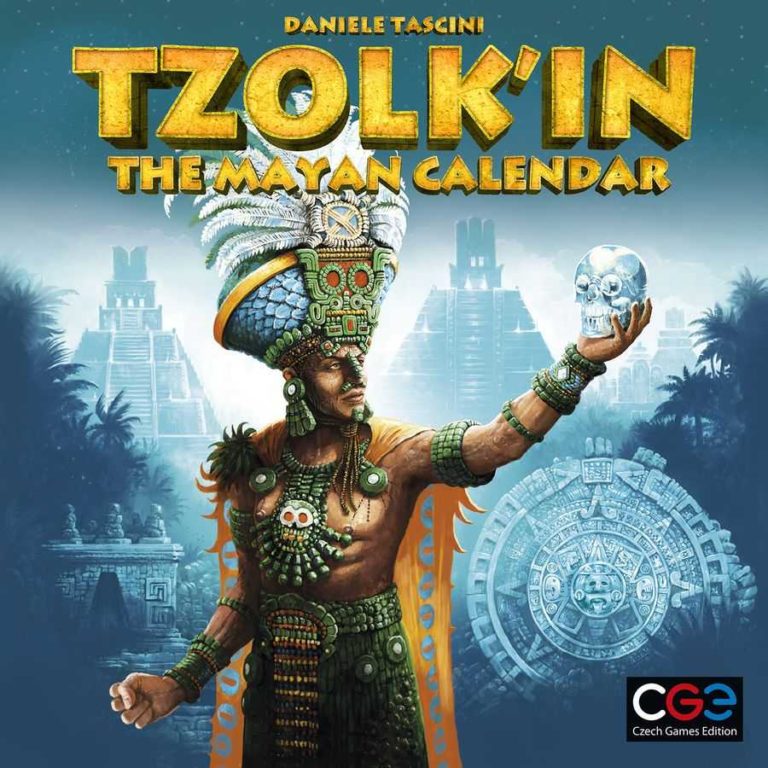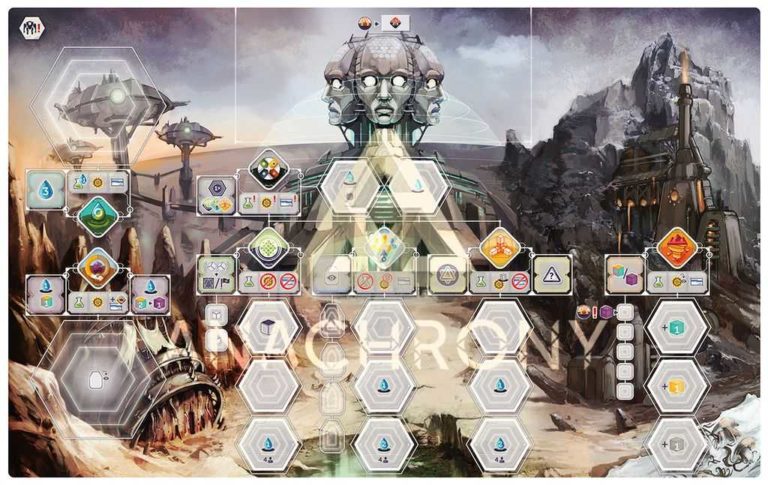Azul Boardgame Review – A Modern Classic In Board Gaming
Azul Boardgame Review – A Modern Classic In Board Gaming
When I first laid my hands on Azul, it was like uncovering a treasure within the modern board gaming scene. It was this discovery that compelled me to share this Azul Boardgame review with you, diving deep into its enchanting world. Each session, from the very first, was like painting with a palette of vibrant tiles, where strategy and aesthetics blend seamlessly on the mosaic we create. It’s not just about placing tiles; it’s about crafting a masterpiece that’s both visually stunning and strategically sound.
Key Points:
- Azul is a modern classic board game with elegant simplicity and strategic depth.
- The game’s unique tile drafting mechanic and scalable difficulty make it accessible and engaging.
- Azul’s mechanics involve drafting tiles, placing them on the board, scoring points, and completing patterns for bonuses.
- Strategic depth in Azul comes from balancing personal progress with hindering opponents, planning ahead, and adapting to changing game states.
- Azul has received critical acclaim and awards, including Spiel des Jahres Winner and Origins Awards Best Board Game.
- Azul stands out from other modern classics like Splendor and Sagrada with its competitive tile-selection process and indirect player interaction.
- The game has garnered praise for its simple rules, deep strategic gameplay, and beautiful components, appealing to a wide range of players.
Azul’s unique allure isn’t solely in its gameplay but in how it brings people together, drawing both seasoned gamers and newcomers into its simple yet profound depth. The game’s design, echoing the historical artistry of the Alhambra’s walls, has not only captured my imagination but also the hearts of everyone I’ve introduced it to. In this review, we’ll explore why Azul has become a fixture on my game table, offering insights into its mechanics, strategy, and the vibrant community it fosters.
The Allure of Azul
Azul’s true beauty lies in its elegant simplicity and the depth of strategy it unfurls. At first glance, it’s a game about selecting tiles, but dive a little deeper, and you’ll find a challenging puzzle of efficiency, foresight, and sometimes, a bit of risk-taking. It’s this beautiful balance that makes Azul not just a game but an experience that resonates with people of all gaming backgrounds.
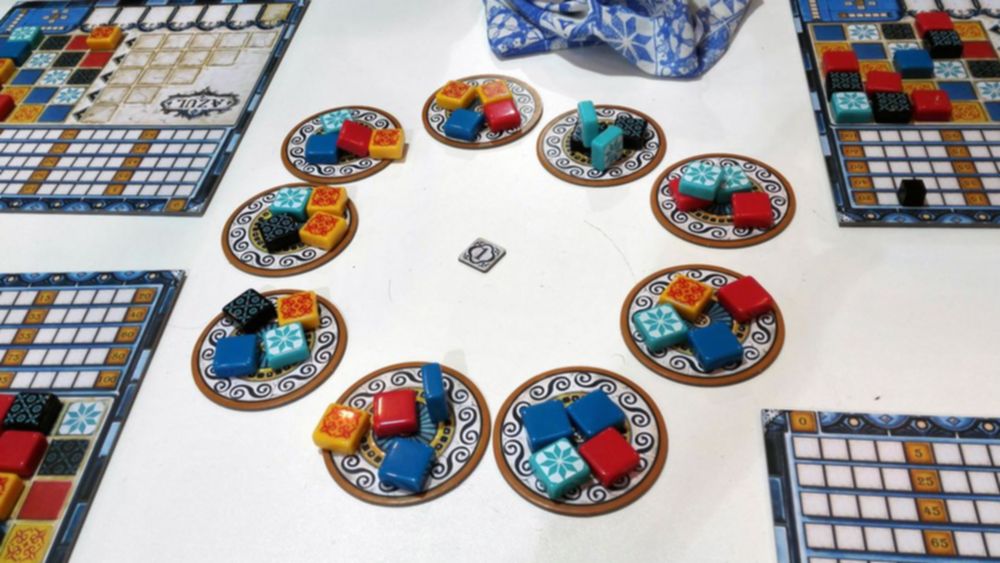
Why Azul Stands Out in Modern Board Gaming
Azul distinguishes itself in the contemporary board gaming landscape through a combination of accessible mechanics, aesthetic appeal, and strategic depth. Here’s why it’s not just another board game, but a modern classic:
- Unique Tile Drafting Mechanic: The process of selecting tiles from the factory offers, or the center pile introduces an intriguing layer of strategy that affects not just your board but also your opponents’.
- Scalable Difficulty: Azul can be as casual or as competitive as the players decide, making it versatile for different types of players.
- Striking Visuals and Quality Components: The tactile nature of the tiles and the colorful patterns players create on their boards make Azul as much a pleasure to look at as it is to play.
- Engages Various Skill Levels: Whether you’re a seasoned strategist or new to board games, Azul offers a satisfying challenge without being overwhelming.
Azul stands out as a modern classic board game due to its unique tile drafting mechanic, scalable difficulty, striking visuals, and ability to engage players of various skill levels.
The Basic Mechanics of Azul
Azul’s mechanics are a beautiful blend of simplicity and depth, making it accessible yet challenging. At its core, players take turns drafting tiles to place on their board, aiming to complete rows and columns for points. Here’s a breakdown of the gameplay:
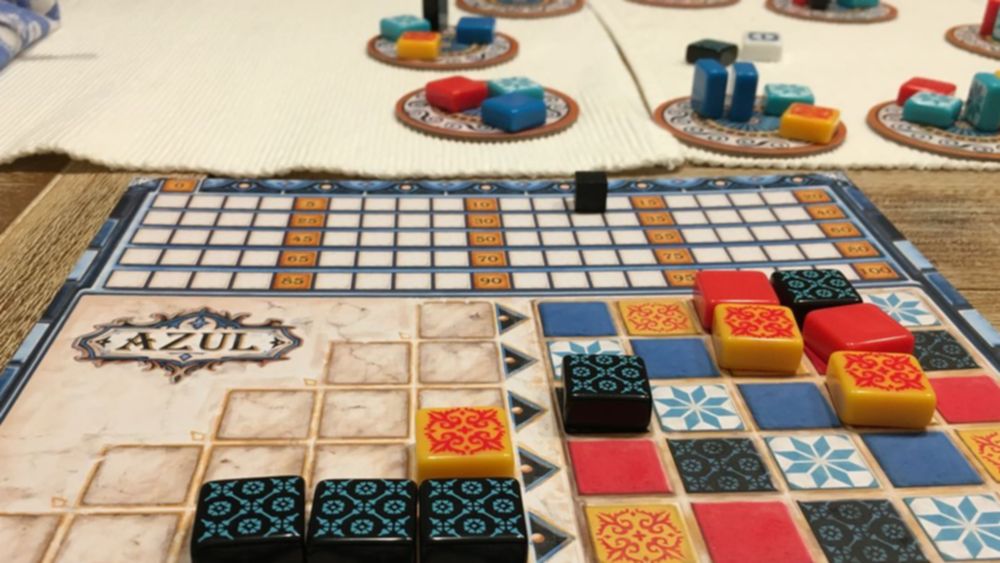
| Step | Description |
|---|---|
| Drafting Tiles | Players take turns selecting all tiles of the same color from a factory display or the center table. |
| Tile Placement | Selected tiles are placed on the player’s board, either in the pattern lines or directly on the wall. |
| Scoring | Points are scored both immediately and at the end of each round, based on how tiles are arranged. |
| End Game | The game ends after a set number of rounds, and bonus points for completed rows, columns, and patterns are tallied. |
The Strategic Depth of Azul
While the mechanics of Azul are straightforward, the strategic depths it harbors are immense. Crafting the perfect strategy requires not only keeping an eye on your board but also predicting and influencing your opponents’ moves. Let’s break down the layers that add to its depth:
In Azul, every choice matters; selecting tiles not only progresses your tableau but can also limit or expand your opponents’ options. Crafting a strategy that balances building your mosaic with disrupting your rivals’ plans is key. The push-and-pull dynamic between personal progress and opponent hindrance is thrilling.
Moreover, bonus points from completing specific patterns or entire rows and columns add another strategic layer to consider. Planning several moves ahead becomes a necessity rather than a luxury. It makes each round a mental puzzle of optimization and foresight.
Lastly, adaptability plays a significant role in mastering Azul. The game’s state changes with every player’s turn, making it crucial to revise strategies on the fly. This dynamic nature ensures no two games of Azul are ever the same, offering endless replayability and challenges to overcome.
Crafting a strategy in Azul involves not only personal progress but also disrupting opponents’ plans, requiring adaptability and foresight for endless challenges and replayability.
Critical Acclaim and Awards
Azul’s brilliance has not gone unnoticed in the board gaming world. Its ability to marry simple mechanics with profound strategic depth has earned it a spotlight on the award stage. Let’s delve into how Azul has been recognized in the gaming community.
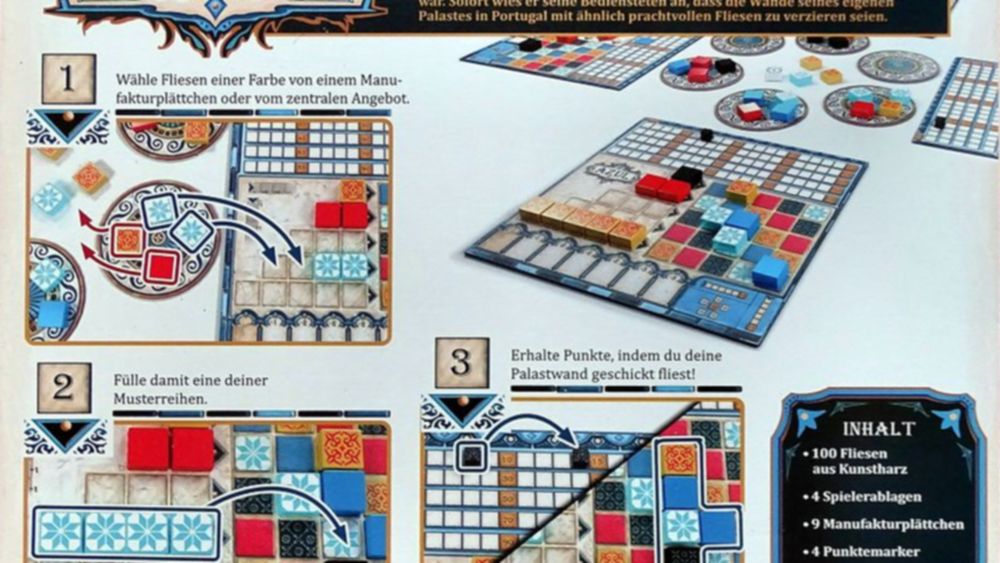
Accolades and Recognition
Since its release, Azul has garnered a plethora of awards, affirming its place as a distinguished title among modern board games. Here are some of its most notable achievements:
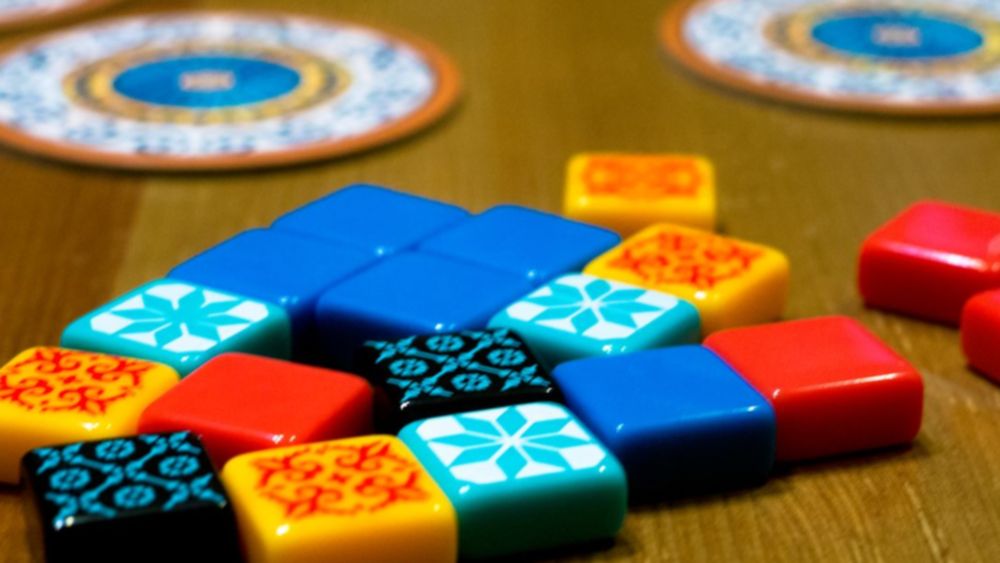
- Spiel des Jahres Winner (2018): This prestigious “Game of the Year” award in Germany is a testament to Azul’s widespread appeal and excellence in game design.
- Origins Awards Best Board Game (2018): Recognized by The Academy of Adventure Gaming Arts and Design, this award highlights Azul’s creativity and quality.
- As d’Or – Jeu de l’Année (2018): Winning this French game of the year award further solidifies Azul’s reputation as a global phenomenon in the board gaming industry.
- Dice Tower Awards Best Family Game (2018): A nod to Azul’s accessibility and enjoyment across a wide range of player ages and gaming experiences.
Comparisons to Other Modern Classics
When it comes to modern classics in the board gaming world, Azul often finds itself in the company of giants like Splendor and Sagrada. Each of these games offers a unique blend of strategy, aesthetics, and accessibility, but Azul distinguishes itself with its elegant simplicity and tactile gameplay. The strategic depth embedded in Azul’s tile-drafting and placement mechanics offers a robust gaming experience, despite its relatively straightforward rules. This balance makes it accessible to newcomers while still appealing to veteran gamers looking for a challenging puzzle.

Splendor and Sagrada both task players with creating something beautiful out of their game pieces, much like Azul. However, while Splendor leans towards resource management and Sagrada focuses on dice drafting, Azul‘s main allure comes from its competitive tile-selection process. The indirect player interaction through tile selection forces players to think about their opponents’ boards in addition to their own. This brings a layer of anticipation and strategy to each round that is uniquely satisfying. Thus, Azul holds its own as a modern classic by offering a different type of challenge that is both visually appealing and intellectually stimulating.
Community and Critic Reactions
The community and critics alike have welcomed Azul with open arms, praising its combination of simple rules and deep strategic gameplay. Its success is reflected not just in its direct sales and widespread recognition but also in how it has fostered a community of players who appreciate its balance of competitive tension and aesthetic pleasure. Players often celebrate the game’s ability to be quick to teach but hard to master, making it a frequent choice for game nights and a gateway for introducing new players to the broader world of board games. The design, which focuses on creating beautiful mosaics, has been specifically cited for its appeal to players who enjoy games that are as pleasing to look at as they are to play.
Critically, Azul has garnered attention for its graceful design and the engaging decisions it requires of players each turn. Reviews frequently highlight how every move feels meaningful, whether it’s selecting tiles from the center of the table or deciding where to place them on your board to maximize points while potentially hindering your opponents. This competitive but indirect interaction has been a point of interest for many reviewers, who appreciate games that foster a spirit of rivalry without direct conflict. Azul’s ability to combine strategic depth with beautiful components has solidified its position as a favorite among both casual players and board game aficionados.
Azul’s success stems from its blend of simple rules and deep strategic gameplay, fostering a community that appreciates its balance of competition and aesthetic appeal, making it a popular choice for game nights and a gateway into the world of board games.
Playing Azul
Playing Azul is a delightful experience, combining strategic decision-making with tactile, engaging components. It’s a game that swiftly moves from casual introductions to deep, thoughtful play, making each session uniquely challenging. The balance between planning your moves and reacting to the evolving tableau in the middle of the table keeps everyone on their toes. Whether you’re a first-timer or a seasoned player, Azul offers a layered gaming experience that is both accessible and deeply rewarding.
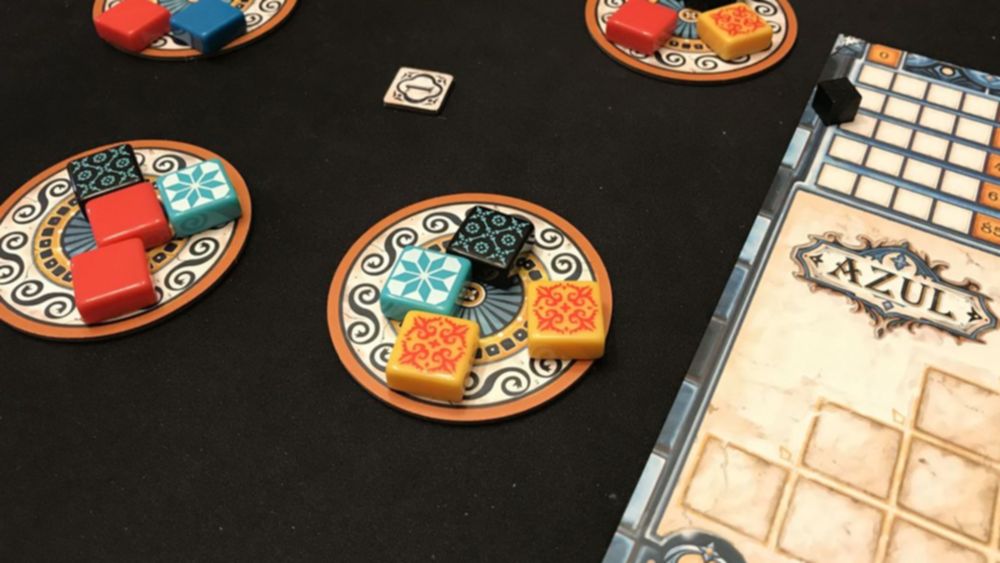
Setting Up Your First Game
Setting up your first game of Azul is a breeze, thanks to its straightforward components and elegant design. Here’s a quick list to get you started:
- Place the scoring board in the middle of the table.
- Arrange the factory displays in a circle around the scoring board, number depending on the number of players.
- Fill each factory display with four tiles from the bag, ensuring a mix of colors and patterns.
- Give each player a player board, facing the side with the colored wall.
- Place the round marker on the first space of the scoring board.
This setup will quickly get you into the heart of Azul, where your strategic decisions and your ability to anticipate your opponents’ moves will lead you to victory.
Strategies for Beginners
For beginners stepping into the world of Azul, here are a few strategies to keep in mind:
Start by focusing on completing one or two rows on your board. This simple strategy helps you score consistently and avoid negative points from tiles you can’t place. Remember that every tile selected but not placed by the end of the round will count against you, so plan your moves carefully.
Pay close attention to the tiles your opponents are collecting. Blocking them from completing their desirable patterns can be just as important as building your own. If you notice someone is collecting a lot of one color, maybe take a few of those tiles for yourself, even if they’re not your first choice. This serves a dual purpose: it hampers their progress while potentially opening up new opportunities for you.
Advanced Tips for Seasoned Players
For the veterans of Azul, pushing your strategy further involves a deeper analysis of the game state. Anticipating the tiles that will be available in the market and the potential moves of your opponents can set you apart from the competition.
One advanced technique is to strategically lose a round to gain the advantage in tile selection for the next round. By carefully choosing when to take the first player marker, you can ensure a more favorable selection of tiles, putting you in a strong position to complete high-scoring patterns on your board.
Another tip is to focus on vertical as well as horizontal scoring opportunities. Rather than concentrating solely on completing rows, consider the points to be gained by placing tiles in columns and adjacent to previously placed tiles. This approach requires thinking a few moves ahead but can lead to high-scoring rounds that might clinch the victory.
Pushing your strategy further in Azul involves anticipating tile availability, strategically losing a round for future advantage, and focusing on both vertical and horizontal scoring opportunities to secure high-scoring rounds.
FAQs
1. What makes Azul different from other tile-laying games?
What sets Azul apart from other tile-laying games is its unique combination of simplicity in rules and depth in strategy. Unlike many tile-layers that rely heavily on the theme or complexity, Azul challenges players with its elegant gameplay mechanics, where the focus is on pattern creation, strategic tile selection, and scoring based on how tiles are placed in relation to each other on a personal board.
2. Can Azul be played solo?
Regarding if Azul can be played solo, while the base game is designed for 2 to 4 players, there are solo variants available that can be found online. These fan-made versions adapt the core mechanics to provide a challenging single-player experience, though the official game does not include a solo mode out of the box.
3. How long does a typical game of Azul last?
The duration of a typical game of Azul is around 30 to 45 minutes, making it an ideal choice for those looking for a game that’s not too time-consuming yet offers rich, strategic gameplay. This makes it a great fit for both casual family game nights and more competitive sessions among board game enthusiasts.
4. Where can I find Azul expansions or related games?
Azul expansions and related games can be found at most major board game retailers, both online and in physical stores. Additionally, publisher websites and specialty gaming shops are also good places to check for the latest expansions, promotional items, and related games that can enrich your Azul experience.
Conclusion
In the world of modern board gaming, Azul has certainly made its mark as a beautifully crafted game that balances simplicity with strategic depth. This Azul Boardgame review has explored the unique aspects that make it stand out, from its aesthetic appeal to the intricate gameplay that keeps players coming back for more. Whether you’re new to board gaming or a seasoned enthusiast, Azul offers something for everyone. It’s not just about placing tiles; it’s about crafting a strategy, anticipating your opponents’ moves, and making the most of the tiles available to you. As we wrap up, I encourage you to reflect on your own gaming preferences and consider how Azul might fit into your collection. Is it the strategic depth, the elegance of design, or the sheer joy of putting those vivid tiles in place that draws you in? Whatever your reason, Azul is a game that deserves a spot on your table.
Till our next gaming adventure, take care and keep the dice rolling!
Lucas
This article uses material from BoardGameGeek and is licensed under the Creative Commons Attribution-Share Alike License.




